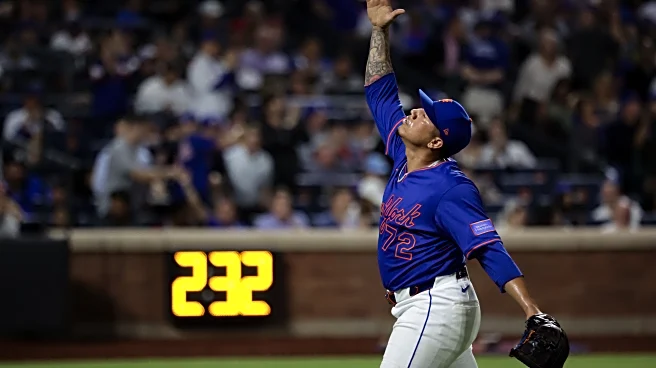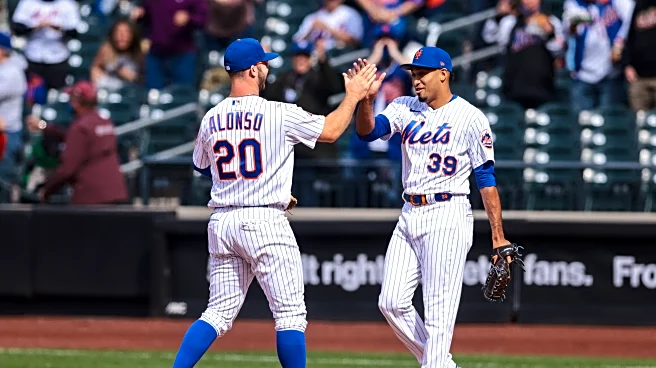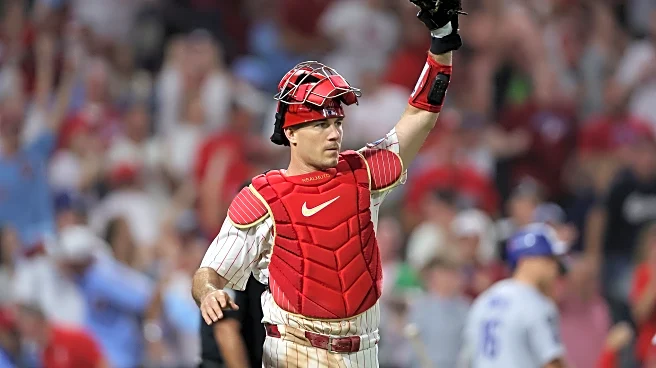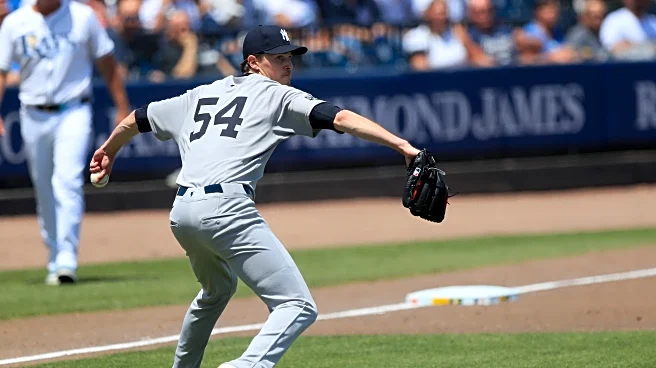Coming into the 2025 season, Amazin’ Avenue ranked Jonah Tong as the fourth-best prospects in the team’s farm system. The right-hander, drafted in the 7th round (209th overall) in the 2022 MLB Draft, began
the year in Binghamton as a fresh-faced 21-year-old, barely old enough to order a drink at a bar. A call to the majors was the farthest thing from anyone’s mind when the season kicked off in April.
That quickly changed, as Tong established himself as one of the best pitching prospects in baseball. He quickly shot up the team’s charts by utterly dominating Double-A. He was part of a combined perfect game in Binghamton in June and became the crown jewel of a quickly-improving system. He posted a 1.76 ERA with 162 strikeouts in 102 innings before being promoted to Triple-A. In MLB Pipeline’s updated midyear list, he ranked as the team’s No. 4 prospect and the No. 46 prospect in MLB. Even with the promotion, a call to the majors still seemed to be a distant dream in 2025.
But the Triple-A stage hardly seemed too big for Tong. In fact, it still far too small. He made just two starts for Syracuse and did not allow an earned run, striking out 17 batters in 11 2/3 innings while scattering eight hits and walking three. To that point, he had struck out more batters (179) than anyone in affiliated ball while sporting the best K-BB% (29.9%). Meanwhile, through a combination of injuries, underperformances, and overstretched pitchers, calls grew louder for the Mets to promote the now-22-year-old. That, combined with the startling success of Nolan McLean following his call-up, made Tong’s arrival in Queens seem more realistic by the day.
In a bit of a surprise, Tong leapfrogged the more-seasoned Brandon Sproat and got called to the show on August 29 to face the Marlins. Lukas Vlahos composed a comprehensive overview of the right-hander, in which he concluded that Tong was “the Mets’ best pitching prospect to debut since Noah Syndergaard in May of 2015”. It was a pretty bold assertion, and one that was on the money given the hype surrounding him. Coming so soon after McLean’s impressive debut, expectations were, perhaps unfairly, sky-high. A quick snippet of Lukas’ overview of Tong’s arsenal:
Tong’s arsenal has been devastatingly simple this year. He blows his 19-vert fastball in the mid-to-upper 90s by batters, then leaves them flailing with a Vulcan change w/ 10 MPH of velo separation and impressive movement characteristics of its own. It’s been such an effective combination that batters have swung and missed at his changeup more than 50% of the time in the minors this season (for the second time in this article, not a typo). He’s experimented with different breaking ball shapes but to this point has not settled on one that’s been particularly effective. In his defense, he hasn’t needed it, but this is something to watch going forward.
That’s a nice arsenal on its own, but what makes it really play up is Tong’s funky delivery. The closest comp you’ll hear is Tim Lincecum, and there is definitely a pronounced tilt to the operation towards the first-base side of the diamond. Because of this, his release point – which is close to a standard 3/4 delivery relative to his torso – winds up almost vertical. Check out Michael Donodeo’s write-up for an explanation of how this works physically, but the long and the short of it is that batters wind up expecting very different pitch movement from what they actually get. Combine that with the raw stuff, which again is very very good in a vacuum, and you get the sort of results Tong has delivered so far this season.
It’s with that in mind that Tong took the mound at Citi Field, donned in the team’s alternate black jersey in front of a capacity crowd on fireworks night. Like McLean before him, he earned the victory in his first start, though it was not quite as eye-opening as McLean’s. He allowed four runs, but only one was earned due to a series of defensive miscues by the club’s veterans. He struck out six and did not walk a batter as he needed 97 pitches to navigate his five innings. But while he was let down by his defense, he benefited from the biggest home offensive outburst in Mets’ history. The club set a franchise record by plating 19 runs to support the youngster in a 19-9 drubbing of Miami.
Unfortunately, whereas McLean continued to excel, the still-not-quite-ready Tong stumbled in his next two starts, enduring back-to-back losses following his first career win. He allowed four earned runs in six innings against the Reds his next time out, walking four while striking out six. In his following start, he had the misfortune of taking the mound opposite Jacob deGrom, setting up comparisons to the old ace and future ace of the franchise. It proved to be a mismatch, as Tong was rocked from the jump and could not escape the first inning. When the dust settled, he was tattooed for six earned runs in 2/3 of an inning, though to the credit of the Citi Field crowd, they showed the youngster support as he slumped off the mound.
Following the game, Tong appeared on the verge of tears as his teammates heaped praise upon his talent and showed him unconditional support. It was a valuable lesson, and a reminder that, despite the moutain of talent, Tong is still a kid who has a lot to learn in the league and was brought up far too early to save a team that was let down by veteran starters like Sean Manaea and Kodai Senga, who were supposed to be the ones making these big September starts. It was unfair for the Mets to need to rely on the likes of Tong, McLean, and Sproat to save their season, and the kids stepped up admirably and did far more than they should’ve been expected to in 2025.
To Tong’s credit, he bounced back his next time out, hurling five innings of one-run ball against the Padres while striking out eight and not issuing a walk. It was the best start of his young career and gave him his second win. Unfortunately, he could not go out on a high note, as he was tagged for five earned runs on seven hits in two-plus innings against the Cubs. Tong ended his first go-around in the majors with a 7.71 ERA and a 4.31 FIP. He struck out 22 and walked nine over 18 2/3 innings, picking up two wins and three losses.
Despite the results, Tong displayed glimpses of greatness and let Mets fans dream of what could be as the team continued to slide into irrelevancy en route to missing the postseason. It was not Tong’s fault (or Sproat’s fault, or McLean’s fault) that the club missed the playoffs in 2025. The rotation was a big reason why the club faded over the last three months, and that is likely to be the team’s biggest project this offseason. Tong figures to factor into those plans.
Tong proved that he belongs, but his time may not quite be next March. He will be given every chance to earn a rotation spot in spring training, but the team will likely explore the option of starting him in Triple-A to gain some additional experience. After all, the right-hander only benefited from two Triple-A starts, whereas McLean and Sproat spent significantly more time at the highest level of the minors. While Tong seemingly had nothing to prove in Triple-A, some additional work will only serve him well.
Tong endeared himself to Mets fans by showing his fun personality in interviews and on the field, appearing both relatable and effortless likable. Wearing his emotion on his sleeve and displaying his human side during hard times only made fans like him more, and getting back up on the horse after being knocked down showed his resolve and resiliency. Predicting Tong’s career trajectory is a fool’s errand, but it certainly appears that he has a bright future ahead of him.












